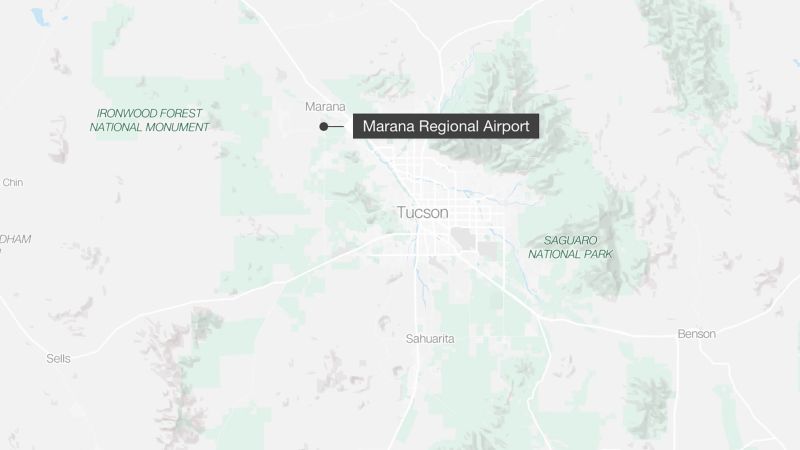
CNN —
Two individuals lost their lives following a midair collision involving two small planes at an Arizona airport on Wednesday, according to officials.
The incident occurred at 8:28 a.m. near Marana Regional Airport, located just northwest of Tucson, and involved a Cessna 172S and a Lancair 360 MK II, based on initial reports from the National Transportation Safety Board (NTSB).
The fixed-wing, single-engine aircraft “collided while upwind of runway 12,” one of two runways at the airport. The Cessna successfully landed without incident, while the Lancair crashed onto the terrain near the second runway, resulting in a post-crash fire, according to the NTSB.
Authorities from the Marana Police Department are present at the airport and have confirmed that at least two fatalities occurred as a result of the accident.
The Federal Aviation Administration (FAA) designated the airport as an “uncontrolled field,” meaning it lacks an operational air traffic control tower. Pilots typically use a Common Traffic Advisory Frequency to communicate their positions with others flying in the area. Despite the uncontrolled status, pilots must adhere to all federal aviation regulations.
An investigator from the NTSB is en route to the site and is anticipated to arrive on Thursday morning to document the scene and inspect the aircraft. The FAA is also responding to the incident.
This incident adds to a series of aviation accidents, starting with the midair collision on January 29 at Ronald Reagan Washington National Airport, which resulted in 67 fatalities when a military helicopter collided with an American Airlines regional jet.
Following that event, there have been four additional aviation incidents that have raised concerns regarding air safety. These include a medevac plane crash in Philadelphia, a plane crash in Nome, Alaska, which resulted in the deaths of ten individuals, an incident in Scottsdale, Arizona, where a private plane veered off the runway causing the pilot’s death, and most recently, a Delta Air Lines regional jet that overturned upon landing in Toronto.
Despite the recent spate of aviation mishaps, preliminary data from January, obtained from the NTSB, indicates a record low number of accidents involving both commercial and private flights across the nation. Prior to the January 29 collision, the last significant fatal aviation incident involving a U.S. carrier occurred in 2009 with a Colgan Air flight.
Smaller aircraft, however, statistically face a greater risk of incidents. These planes fall under less stringent regulations compared to those operating under Part 121 regulations, which apply to major commercial airlines. While private and general aviation planes are also subject to inspections and maintenance, they follow different, more lenient FAA rules.
Moreover, there is a larger fleet of smaller aircraft in operation. The National Air and Space Museum estimates there are over 340,000 general aviation aircraft globally, with U.S. pilots operating around 204,000 of them.
This is a developing story and further updates will be provided.









